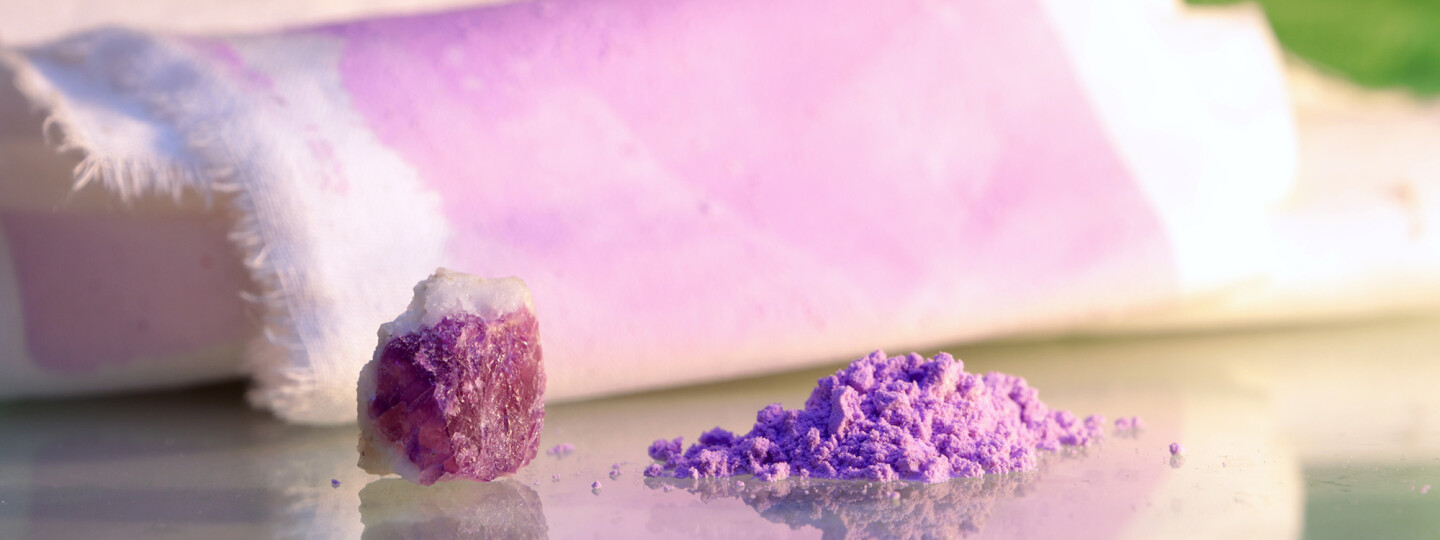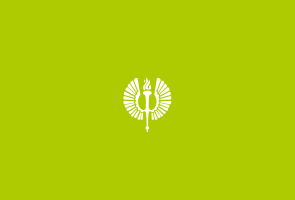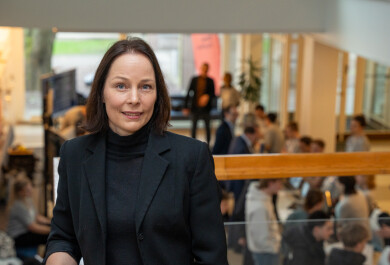A joint Nordic research project is developing new types of environmentally friendly smart textiles. The prototypes developed in the project will be displayed in an exhibition at the University of Turku, in the Natura building, from 1 to 11 October. The exhibition will be opened on 1 October at 14.00, followed by public lectures on the themes of the exhibition.
A joint Nordic project, "Beyond E-textiles", is developing environmentally friendly smart textiles that do not require electrical circuits to function. The lack of electrical components minimises the environmental footprint of the smart textiles that are approaching the market. And there are a lot of such textiles coming, with a market value expected to exceed $5 billion by 2029.
Smart clothing can help monitor UV exposure, regulate temperature or clean itself without water. Such garments are not far off, but existing prototypes are usually combined with electrical circuits that prevent them from being recycled, for example.
The interdisciplinary work makes it possible to produce textiles with innovative functions, but also with a low environmental impact. One of the outcomes of the project was to transform a conventional fabric, such as a cotton sheet bought in a local shop, into a UV-detecting sensor. This was done using a photochromic mineral, hackmanite, which naturally changes colour under UV light. It works in a similar way to how human skin changes colour when exposed to sunlight.
"This inspired us to apply hackmanite to a fabric to create a practical UV detector, and it worked. The resulting textile is able to monitor UV index values, even at levels below 3, which is the threshold for taking preventive measures against sun exposure. By changing colour under UV radiation, these fabrics can easily raise awareness of UV exposure, helping to reduce the risk of skin burns and related conditions. Such sensors are especially needed in countries such as Finland, where people are not in the habit of using sunscreen or covering themselves from the sun, resulting in an increasing number of melanoma cases," says Alicja Lawrynowicz, a Doctoral Researcher from the University of Turku.

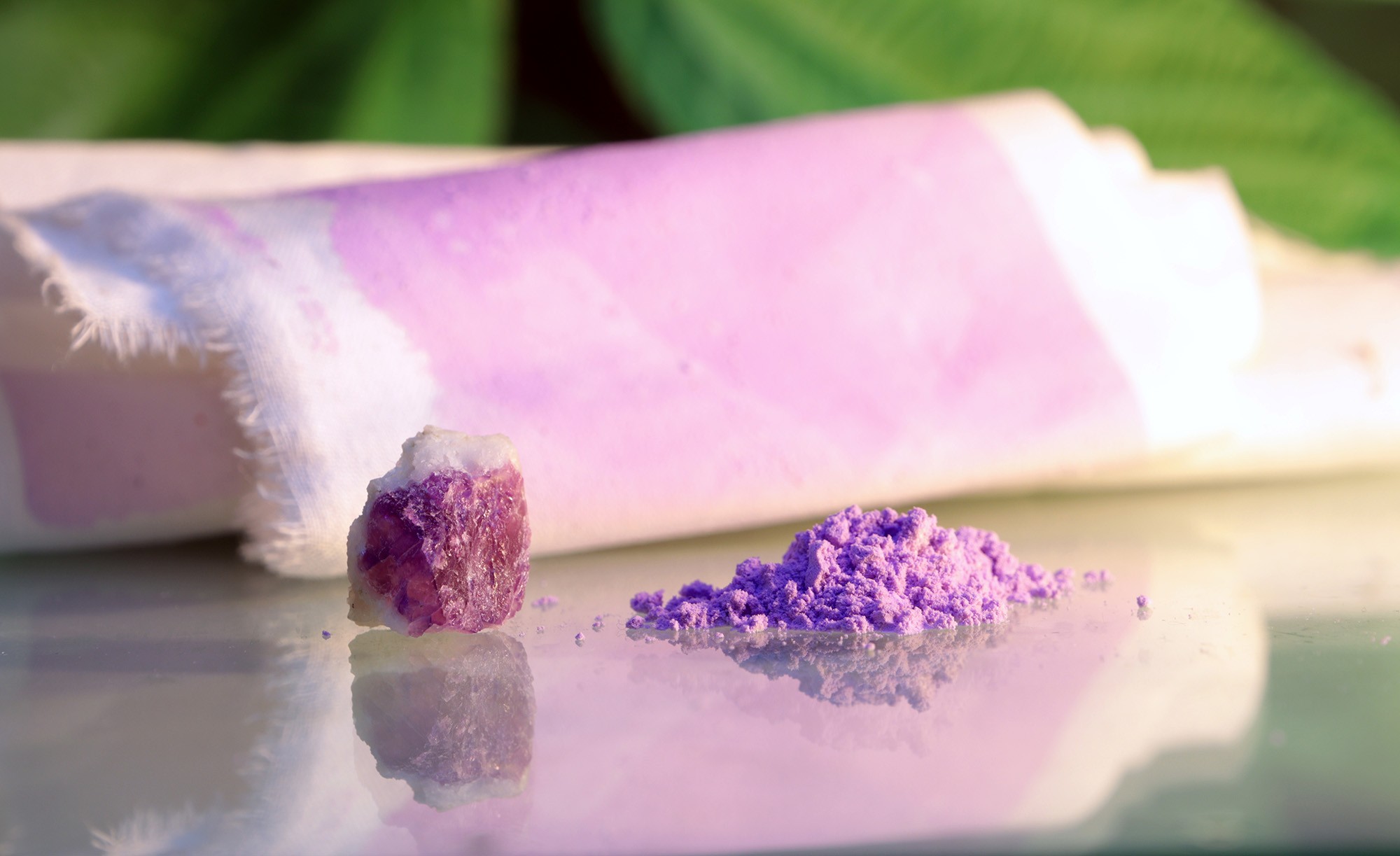
Different forms of hackmanite: natural mineral (left), synthetic powder (right), and hackmanite-coated fabric. The white forms turn purple after UV exposure. Photo: Sami Vuori & Alicja Lawrynowicz
Moreover, over the past four years, the project has explored new ways to make the textile industry more sustainable. For instance, the group from Denmark developed durable dyes from local restaurant waste. In the future, these eco dyes can replace conventional ones that are characterised with high toxicity levels.
Meanwhile, researchers at Aalto University crafted fabrics from Lupin, which is an invasive plant in Finland. Every spring Lupin must be harvested in large quantities to protect Nordic native flora, but instead of throwing it away, we can make sustainable yarns out of it.
The wide-ranging results of this project wouldn’t have been possible without a diverse team of experts.
"We don’t want our project to stay in the lab; we want to see our innovations used in the industry and in the market," continues Lawrynowicz.
Bringing it all together in an exhibition
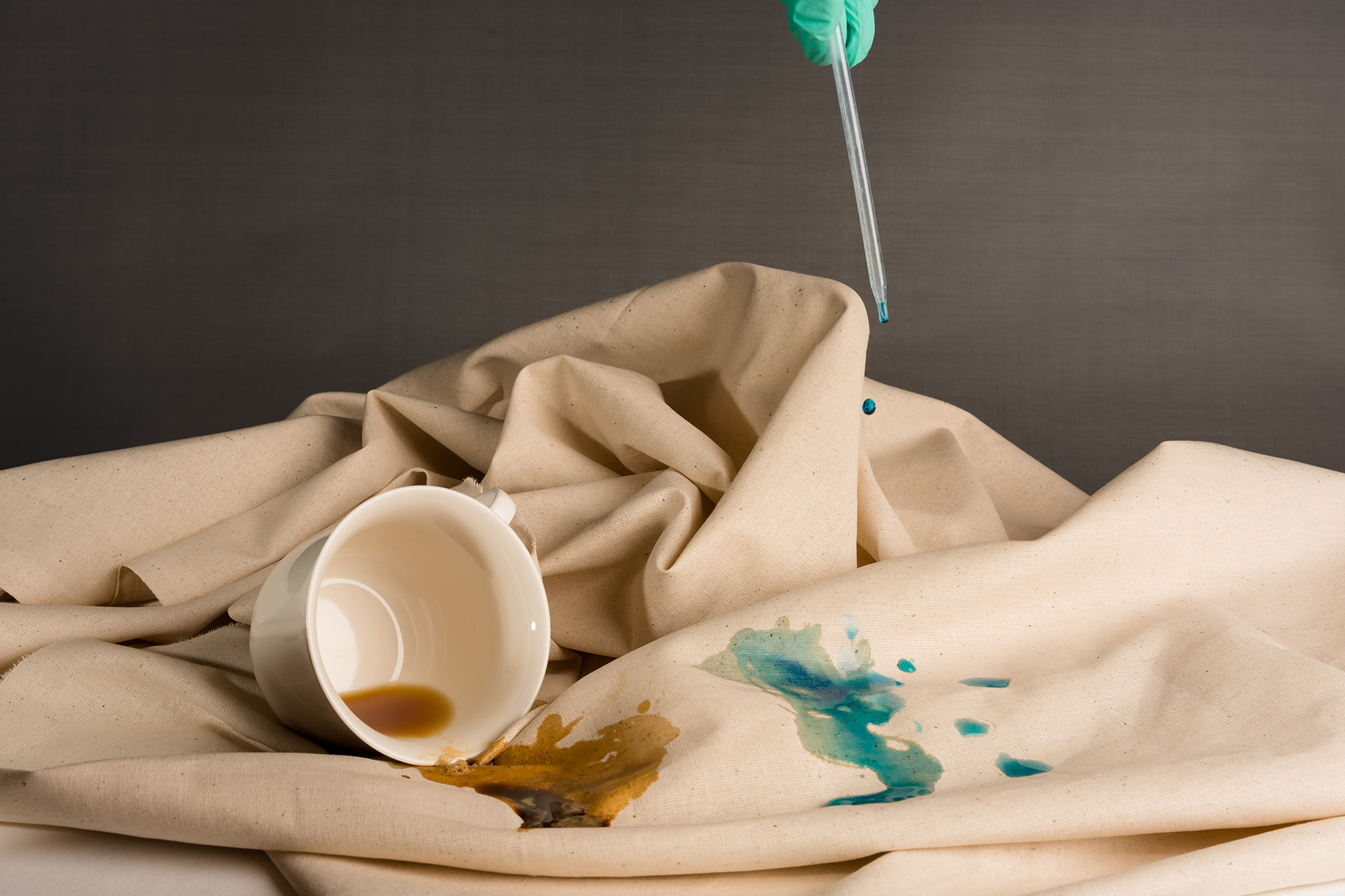
Cotton treated with zinc oxide creates a self-cleaning fabric. Stains from methylene blue and coffee are removed under sunlight. Photo: Mikael Nyberg
The prototypes made within this project are exhibited at the University of Turku from the 1st to 11th of October 2024 in the main lobby at the Natura building.
The opening event of the exhibition will take place on 1 October at 14.00, followed by public lectures on the themes of the exhibition. The exhibition and its opening event are open to everyone interested and free of charge.
"I believe we’ve succeeded in creating innovative and ecological fabrics and processing methods. And now we’ve built an exhibition to showcase our work. Our exhibition harmoniously interlaces science, art, and design,” says Lawrynowicz.
The doors at the Natura building are open to visitors between 8 am and 5 pm. The address is Natura, Vesilinnantie 5, Turku. The main doors of the building are on the side of the square at the University Hill.
The Beyond E-textile project involves Aalto University, University of Turku, University of Borås, VIA University College, and the Iceland University of the Arts.
